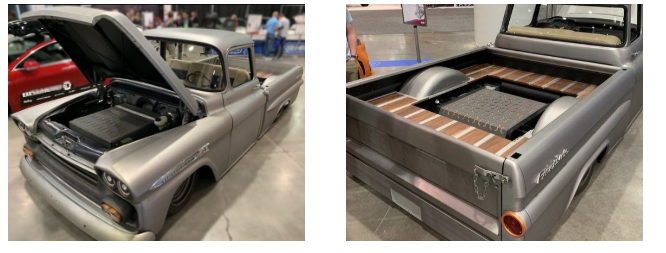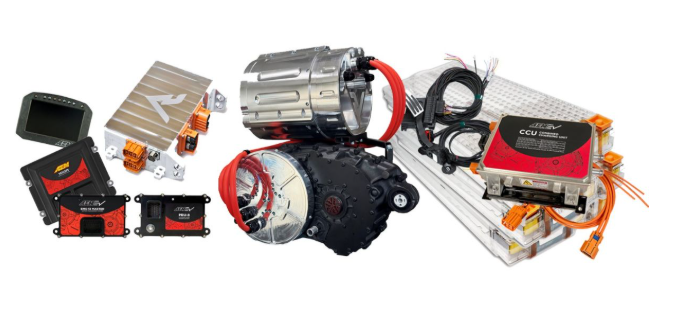 Motortopia Staff
.
May 12, 2025
.
Press Release
Motortopia Staff
.
May 12, 2025
.
Press Release

Ever seen a classic Chevy humming down the street, and thought, “Wait a second, it’s humming?!” You’re not alone—and most of the time that first question is quickly followed up with a second, “How much did that cost?”
You’re about to find out how much it might cost to bring your own classic car to the point where it can compete. If you’re intrigued—or maybe a bit intimidated—by the unknown price tag, you’re in the right spot. Below, we’ll break down the EV conversion cost from real parts to labor, referencing the details straight from our own shops and network. Let’s go through the numbers together so you can decide if it’s a viable route for you, your wallet, and your ride.

Converting starts with a core kit—motor, controller, charger, battery, and a battery management system (BMS). Kits can range from budget commuter sets to high-powered performance bundles, typically costing $14,000–$17,000 for a standard kit (with a 120V–144V motor delivering ~120hp and a range of 50–130 miles for vehicles under 3,000 lbs.), not including your donor car.

It’s worth noting that kit quality and performance specs vary widely. A commuter-friendly kit might cost less but come with modest range and acceleration. We have four cost-effective kits available here, while the more performance-oriented kits push the envelope—and your wallet—further, $25,000-$67,990.

They start around $33,000 (e.g., our Fiat 500 drop-in kit) but can climb to $75,000 (e.g., the eGT913 EV System – Porsche 911|912 from 1966–1989). Convenience and brand support come at a premium.
Pre-configured systems are ideal if you want the best possible assurance that everything clicks right out of the box. They also typically come with dedicated support channels, which can save countless hours (and nerves) during installation and calibration.

If you’re still trying to picture the nuts and bolts of EV conversion cost, let’s consider a few hypothetical builds to show how different choices add up. These examples aren’t exact quotes but should help you see how each component drives the bottom line.
1. Basic City Commuter
Why It Works: You don’t need triple-digit range for city errands, so a modest battery plus a simpler kit keeps things affordable. It’s a direct path to gas-free long-term savings without breaking the bank upfront.
2. Midrange Family Crossover
Why It Works: If you need to cart the family around on weekends or run errands without constant recharging, a mid-tier setup strikes a balance. It might be pricier, but you get a comfortable daily driver.
3. High-Performance Build
Why It Works: You’re paying for thrills—hence the advanced hardware and unique craftsmanship. This approach suits drivers who want to turn heads at a car meet or demolish the 0–60 bracket.
4. All-In-One Preconfigured System
Why It Works: You pay extra for convenience and brand confidence. This route often gives you the strongest support channels, fewer technical headaches, and a system built to function in harmony out of the box—fully protected by manufacturer warranties, including configuration and programming.
The Point: Your final number always depends on your vehicle, performance goals, and how much legwork you’re willing (or able) to do yourself. If you only need a bare-bones commuter setup, you can stay on the lower end near $18–$20k total.
If you’re craving more range or power, you’ll watch the invoice climb. The key is matching your real driving needs and budget to the right components—and knowing there’s an option for almost every scenario in between.
Share Link